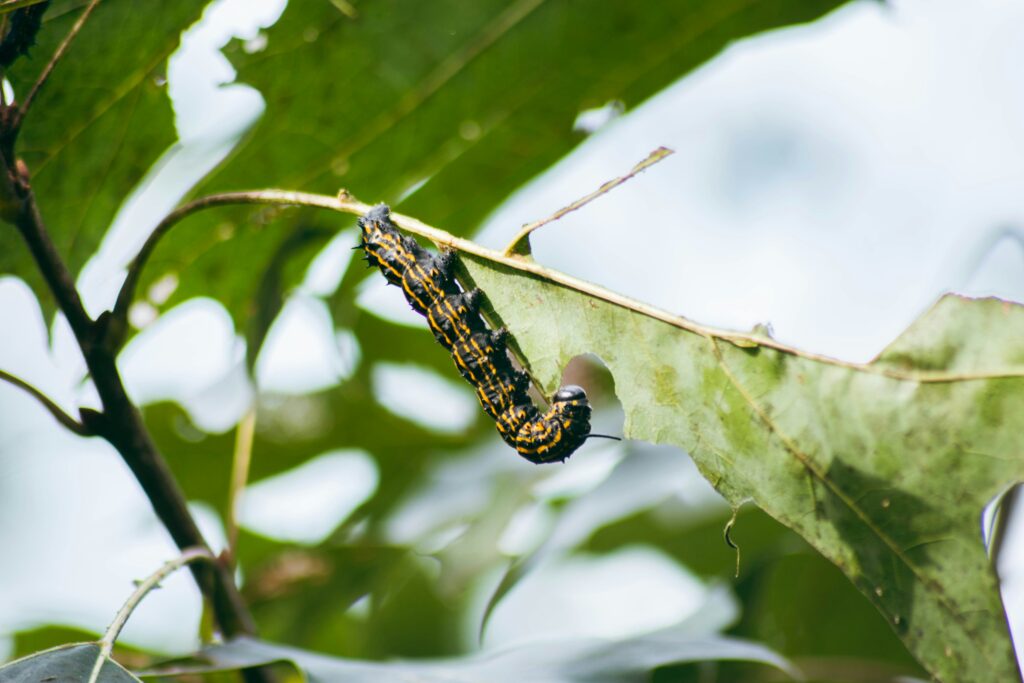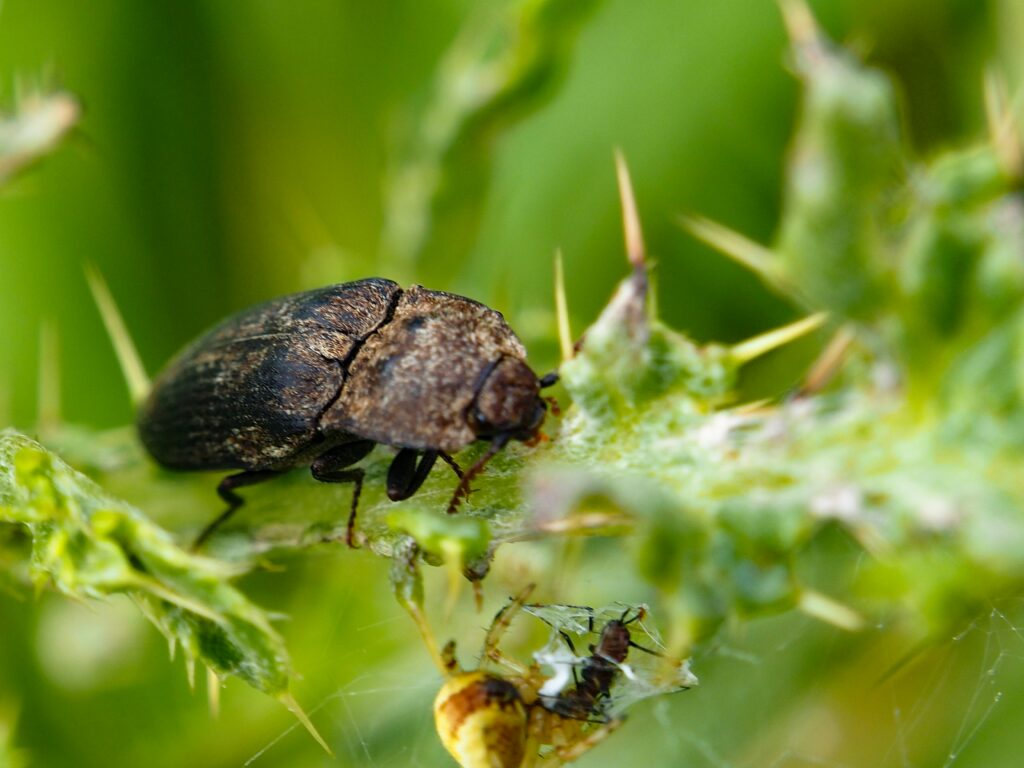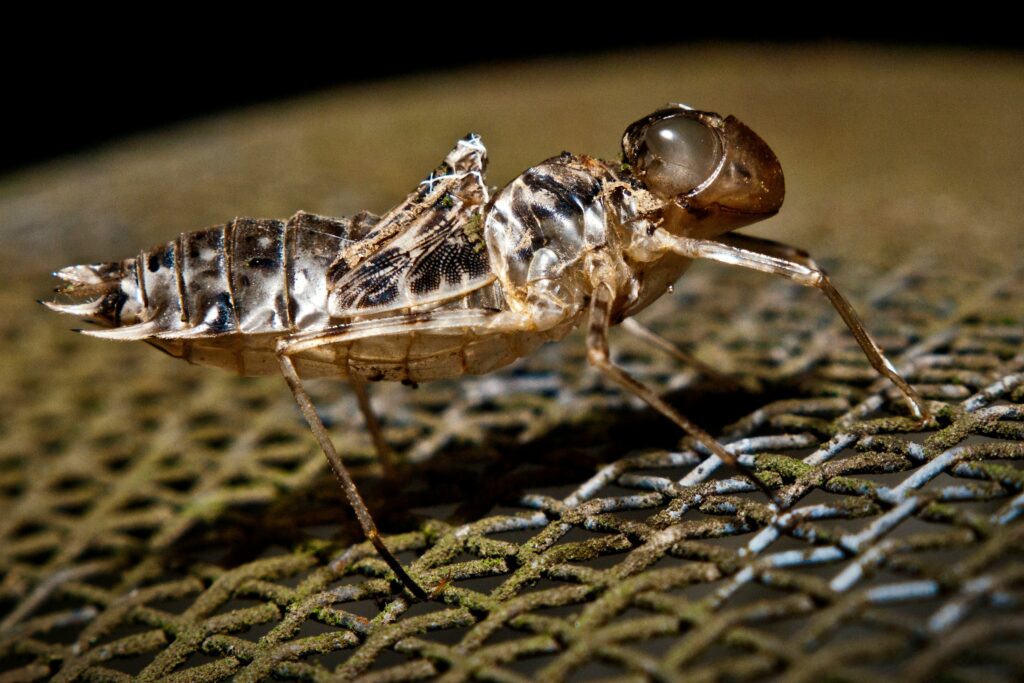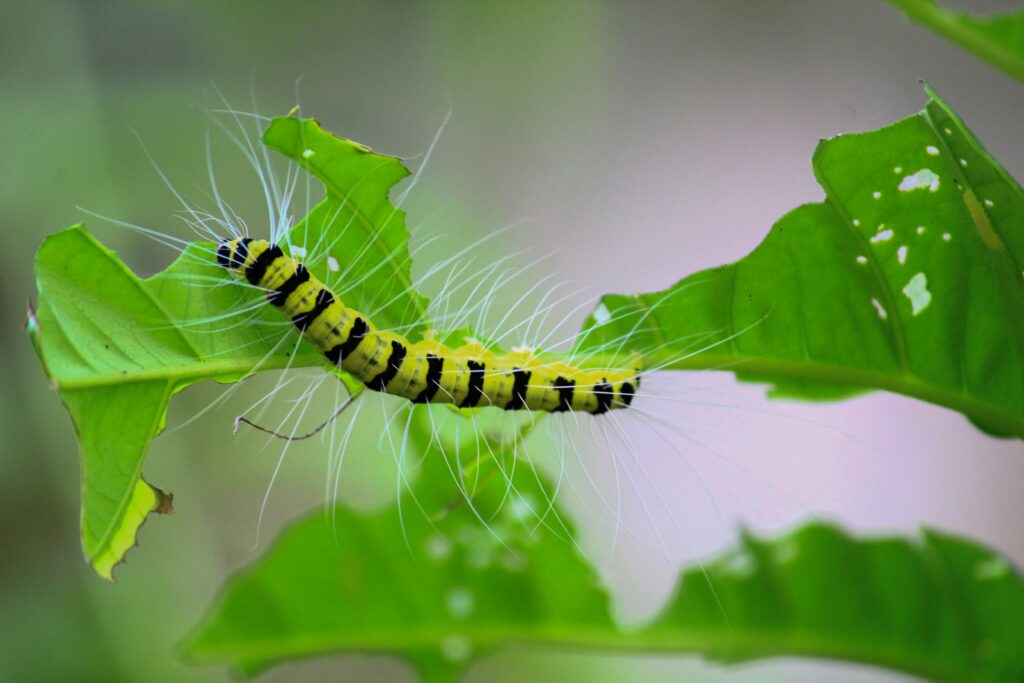In the fascinating world of insects, growing up isn’t as straightforward as it is for humans. These tiny creatures don’t simply get bigger with age—they undergo dramatic transformations governed by a complex interplay of environmental cues, hormonal signals, and genetic programming. From the temperature of their surroundings to day length and even unusual triggers like flooding or the presence of predators, insects respond to an intricate network of signals that tell them when it’s time to molt, metamorphose, or mature. Understanding these triggers not only satisfies our curiosity about the natural world but also provides valuable insights for agriculture, pest management, and conservation efforts. Let’s explore the remarkable factors that determine when and how an insect transitions from juvenile to adult.
Temperature: The Universal Growth Regulator

Temperature serves as perhaps the most fundamental growth regulator in the insect world. Unlike mammals, insects are ectothermic, meaning they cannot internally regulate their body temperature and instead rely on environmental heat. This dependence creates a direct relationship between ambient temperature and developmental rate—within certain limits, warmer temperatures accelerate development while cooler temperatures slow it down. Entomologists use a concept called “degree-days,” which measures the accumulation of heat over time, to predict when insects will reach specific life stages. For many agricultural pests, this predictive tool helps farmers time their pest management strategies precisely. Some insects, like certain mosquito species, can complete their entire life cycle in just a week during hot weather but might take a month or longer during cooler conditions.
Photoperiod: Daylight as a Developmental Clock

The length of daylight, known as photoperiod, serves as a reliable seasonal indicator that many insects use to time their development. This mechanism allows insects to synchronize their life cycles with favorable environmental conditions, particularly in temperate regions where seasons change predictably. For example, many moth species enter diapause (a state of suspended development) when days grow shorter in autumn, preventing them from maturing into adults during the harsh winter months. The detection of photoperiod occurs through specialized photoreceptors that trigger hormonal changes within the insect’s body. What makes this system remarkable is its precision—some insects can detect changes in day length as small as 15-30 minutes, allowing them to respond to seasonal transitions with astonishing accuracy. This sensitivity explains why many insects emerge or reproduce during specific weeks of the year, even when other conditions vary.
Hormonal Control: The Internal Growth Orchestra

Behind every visible change in an insect’s development lies an intricate hormonal system orchestrating the transformation. Two primary hormones—juvenile hormone (JH) and ecdysone—work in careful balance to control growth and metamorphosis. Juvenile hormone maintains the insect in its immature state, while ecdysone triggers molting, the process of shedding the exoskeleton to allow growth. As an insect approaches maturity, JH levels typically decline, allowing ecdysone to initiate the final transformation into an adult. This hormonal interplay is vulnerable to disruption, which explains how some insecticides work—they mimic these natural hormones, causing developmental confusion that prevents insects from maturing properly. The discovery of these hormonal mechanisms revolutionized our understanding of insect development and opened new avenues for pest control that target specific developmental pathways rather than simply poisoning insects.
Crowding: When Population Density Triggers Transformation

In some insect species, population density serves as a surprising trigger for developmental changes. The most dramatic example occurs in locusts, which exist in two distinct forms—solitary and gregarious. When population density increases and locusts frequently touch one another, a remarkable transformation begins. Within hours, their behavior changes, and over subsequent generations, their body shape, color, and physiology transform dramatically. This density-dependent phase change helps explain how devastating locust swarms form. Similarly, certain caterpillar species develop differently when crowded—some grow faster to escape competition, while others develop defensive features like increased hairiness or toxicity. The mechanisms behind these density-dependent changes involve a complex mix of tactile stimulation, pheromone detection, and consequent hormonal shifts that fundamentally alter development pathways.
Nutritional Triggers: You Are What You Eat

The quality and quantity of food available to immature insects profoundly influence their developmental trajectory. In social insects like honey bees, nutrition determines caste development—female larvae fed royal jelly develop into queens, while those fed standard worker jelly become sterile workers. This nutritional programming triggers epigenetic changes that affect thousands of genes, fundamentally altering the bee’s development. In many other insect species, nutritional scarcity can extend development time as larvae struggle to accumulate sufficient resources for metamorphosis. Conversely, certain nutrients can accelerate development or trigger specific developmental changes. For instance, some butterfly caterpillars develop different color patterns depending on the plant species they consume, creating camouflage specific to their food source. These nutritional effects demonstrate how environmental conditions directly translate into developmental outcomes through metabolic pathways.
Diapause: The Developmental Pause Button

Diapause represents one of the most sophisticated adaptations in insect development—a programmed pause that allows insects to survive unfavorable conditions. Unlike simple dormancy, diapause involves complex physiological preparation and metabolic adjustments that help insects survive extended periods of cold, heat, or drought. The trigger for diapause varies by species but often involves decreasing day length, signaling approaching winter. What makes diapause remarkable is that it can occur at any developmental stage—egg, larva, pupa, or adult—depending on the species. Some insects, like the iconic monarch butterfly, use diapause to survive winter during their adult stage, while others like the cecropia moth overwinter as pupae inside protective cocoons. Perhaps most impressively, certain insects can remain in diapause for multiple years if environmental conditions remain unfavorable, demonstrating remarkable developmental flexibility.
Predator-Induced Development: Growing Up Faster Under Threat

The presence of predators can dramatically alter how some insects develop, creating a fascinating example of developmental plasticity. When certain mosquito larvae detect chemical cues from predators in their aquatic environment, they accelerate their development, emerging as adults earlier than they would in predator-free conditions. This accelerated development comes with a cost—the adults are often smaller and less fecund, but this trade-off increases their chance of surviving to reproduce at all. Similar predator-induced developmental changes occur in many aquatic insects, including damselflies and water boatmen. Some caterpillar species develop different defensive features depending on the specific predators present in their environment—growing longer spines, becoming more cryptically colored, or developing chemical defenses. These examples demonstrate how insect development remains responsive to ecological context throughout their growth period.
Hydration and Flooding Triggers: Water as a Developmental Signal

Water availability serves as a critical developmental trigger for many insects, particularly those adapted to arid environments or seasonal flooding. Desert-dwelling insects often synchronize their development with rainfall patterns, with their eggs remaining dormant in soil for months or even years until sufficient precipitation occurs. When rains arrive, these eggs quickly absorb water and begin development, allowing the insects to complete their life cycles during the brief period when conditions are favorable. On the opposite extreme, certain mosquito eggs laid on dry surfaces near water bodies remain viable but dormant until flooding submerges them, triggering hatching within minutes. This adaptation allows mosquitoes to exploit temporary water bodies that appear unpredictably. For some semi-aquatic insects, even changes in water chemistry or temperature serve as specific signals that determine when development proceeds or pauses.
Touch and Mechanical Stimulation: Physical Contact as a Trigger

Perhaps one of the most unusual developmental triggers in the insect world involves physical stimulation or touch. Certain parasitic wasps that develop inside the bodies of other insects determine when to pupate based on the movements of their host. As the host approaches its final instar or begins to form a pupa, the changes in pressure or movement patterns signal the wasp larva to synchronize its development accordingly. In some soil-dwelling insects, the physical resistance encountered while moving through soil provides important information about depth, which helps determine when to pupate or emerge as adults. Even more remarkably, some insect eggs require specific mechanical stimulation to hatch—like those of certain parasitic wasps that only begin development when they detect the movement patterns characteristic of a suitable host. These tactile triggers demonstrate how insect development integrates multiple sensory inputs beyond the biochemical signals we typically associate with growth regulation.
Symbiont-Mediated Development: Growing Up With Microbial Help

The developmental trajectory of many insects depends critically on relationships with symbiotic microorganisms that contribute to their growth and maturation. In insects that feed on nutrient-poor diets like wood, plant sap, or blood, bacterial or fungal symbionts provide essential nutrients that the insect cannot synthesize or obtain directly from its food. Without these microbial partners, development often stalls or results in stunted adults with reduced fertility. The relationship between termites and their gut protozoans offers a striking example—when young termites molt, they lose their gut flora and must acquire it again through feeding on fecal material from other colony members. Without this microbial recolonization, the termites cannot digest cellulose and will fail to develop properly. Similarly, certain fruit flies require specific yeasts not just for nutrition but also for proper hormonal signaling that coordinates development, highlighting the deep integration between microbial partners and insect developmental processes.
Climate Change and Disrupted Development: When Triggers Misfire

As global climate patterns shift, many insects face developmental challenges when traditional environmental cues become unreliable. Insects that time their development according to temperature may emerge too early if winters warm prematurely, potentially facing lethal cold snaps or emerging before their food plants have developed. Species that rely on photoperiod face a different problem—while day length remains consistent year to year, the temperature conditions associated with particular day lengths are changing, creating mismatches between developmental timing and environmental conditions. Research has documented numerous cases of disrupted synchrony between insects and their host plants or prey species due to differential responses to climate change. For instance, winter moth caterpillars in parts of Europe now often hatch before oak leaves emerge, creating a starvation period that has reduced populations significantly. These climate-driven developmental disruptions may ultimately drive evolution of new timing mechanisms as selection favors individuals whose development better matches changing conditions.
Practical Applications: Using Developmental Triggers in Pest Management

Understanding the triggers that control insect development has led to innovative pest management strategies that exploit these natural mechanisms. Insect growth regulators (IGRs) represent one successful application—these compounds mimic or interfere with juvenile hormone or ecdysone, preventing insects from completing normal development. Unlike traditional insecticides, IGRs often specifically target arthropods, reducing impacts on non-target organisms like vertebrates. Another application involves using degree-day models to precisely time interventions when pests are most vulnerable, increasing effectiveness while reducing the total amount of pesticide applied. In some agricultural systems, farmers manipulate environmental conditions like flooding timing or field temperature through mulching to disrupt pest development cycles. Even more sophisticated approaches involve releasing sterile insects whose development has been genetically modified or irradiation-disrupted, allowing them to compete for mates but produce no viable offspring, gradually reducing pest populations without chemicals.
Evolutionary Perspectives: Why Development Responds to These Triggers

The remarkable diversity of developmental triggers in insects reflects millions of years of evolutionary adaptation to varying environments and ecological pressures. Insects that evolved reliable mechanisms to synchronize their development with favorable conditions gained significant fitness advantages over those that developed at random times. The prevalence of temperature and photoperiod as primary triggers makes evolutionary sense—these environmental factors reliably indicate seasonal changes in most habitats and have done so for millions of years. The more unusual triggers, like predator detection or flooding, represent specialized adaptations to specific ecological niches or pressures. What makes insect developmental plasticity particularly fascinating from an evolutionary perspective is how it allows single species to thrive across varying environments without genetic changes—the same genetic program can produce different developmental outcomes depending on environmental conditions. This phenotypic plasticity provides a buffer against environmental variation and may help explain why insects have been so extraordinarily successful across nearly every terrestrial and freshwater habitat on Earth.
Insect development represents one of nature’s most sophisticated examples of environmental responsiveness. From the predictable influences of temperature and daylight to the surprising effects of predators, crowding, and even physical touch, insects have evolved to integrate countless environmental signals into their developmental programs. This remarkable flexibility allows them to synchronize their life cycles with resource availability, avoid unfavorable conditions, and maximize their reproductive success across dramatically different environments. As we continue to study these developmental triggers, we not only gain insight into the ecological strategies that have made insects Earth’s most successful animal group but also develop new tools to manage both beneficial and pest species. In an era of rapid environmental change, understanding the complex interplay between insect development and environmental cues may prove crucial for predicting and mitigating the impacts of climate change on these ecologically essential creatures.

